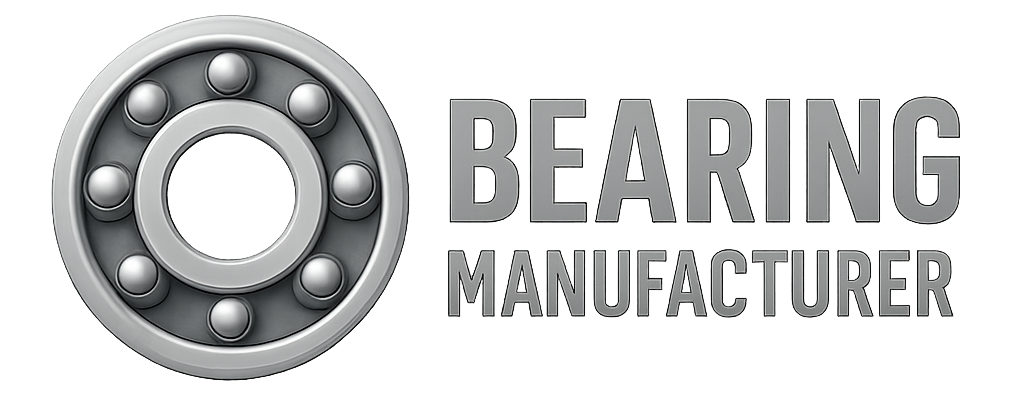Introduction
In modern machinery, linear bearings are essential for enabling precise, low-friction motion in a straight line. While their role is critical, it is the design quality that truly determines performance, efficiency, and longevity. This guide provides engineers, designers, and procurement specialists with an in-depth understanding of linear bearing design — from fundamental principles to advanced innovations — so they can make informed technical and purchasing decisions.
1. Basics of Linear Bearings
Linear bearings are mechanical components that allow smooth motion in a single axis.
-
Linear vs. Rotary Bearings: Rotary bearings support rotational motion, while linear bearings guide movement along a straight path.
-
Friction Reduction: Linear bearings minimize direct surface contact between moving parts, reducing wear and energy loss.
2. Types of Linear Bearings
2.1 Plain (Sliding) Bearings
-
Linear Sleeve Bearings – Cylindrical sleeves allowing a shaft to slide inside, usually with lubrication.
-
Support Rail Variants – Designed for shafts mounted on support rails, improving rigidity.
-
Mounted Sleeve Bearings – Pre-mounted in housings for easy installation.
2.2 Rolling Element Bearings
-
Linear Ball Bearings – Use recirculating or non-recirculating balls to minimize friction.
-
Spline Shaft Bearings – Enable both linear and rotational motion for specific applications.
-
Mounted Linear Ball Bearings – Pre-mounted for simplified assembly.
Key Difference:
-
Ball Bearings: Best for high-speed, lower-load conditions.
-
Roller Bearings: Handle heavier loads but operate at lower speeds.
3. Operating Principles
-
Rolling Element Bearings: Balls or rollers travel along hardened tracks, enabling smooth motion.
-
Plain Bearings: Rely on a sliding interface, often enhanced with lubrication or self-lubricating materials.
4. Key Factors Influencing Design
-
Load Capacity – Must handle radial, axial, and moment loads as specified.
-
Speed & Precision – High-speed applications require low-mass rolling elements; high-precision needs tight tolerances.
-
Environment – Temperature, humidity, and exposure to chemicals determine material and sealing choices.
-
Lubrication Strategy – Oil, grease, or solid lubricants; self-lubricating options for low-maintenance setups.
-
Cost vs. Performance – Balance initial investment with long-term durability.
5. Components of a Linear Bearing System
-
Rails & Tracks – Guide the motion path and carry loads.
-
Bearing Carriages (Blocks/Slides) – Move along rails, transmitting forces.
-
Lubrication Systems – Extend service life and reduce wear.
-
Seals & Enclosures – Protect against dust, debris, and moisture.
-
Mounting & Alignment – Critical for load distribution and smooth motion.
6. Key Design Considerations
-
Select the right bearing type for the application.
-
Match materials to environmental and load requirements.
-
Define preload and clearance for rigidity vs. free motion.
-
Choose effective sealing for contamination control.
-
Establish a maintenance schedule to avoid premature failure.
7. The History of the LM Guide
-
1944: Ball bushing introduced in the U.S. — limited load capacity.
-
1971: Hiroshi Teramachi develops the angular ball spline to improve clearance.
-
1972: THK launches the world’s first LM Guide (Model LSR).
-
1973 & 1975: NSR-BC and NSR-BA models set new precision standards.
8. Applications of Linear Bearings
-
Machine Tools & CNC Systems – High precision for machining.
-
Automation & Robotics – Smooth repetitive motion for productivity.
-
Medical Equipment – Accuracy in MRI, CT scanners, surgical robots.
-
Conveyor Systems – Efficient product movement in manufacturing.
-
Aerospace & Automotive – Precision in assembly lines and landing gear.
9. Industry-Specific Design Adaptations
-
Aerospace: Lightweight, high-strength materials with tight tolerances.
-
Food Processing: Corrosion-resistant, hygienic designs.
-
Automotive: High-speed, vibration-resistant solutions.
10. Advanced Topics
-
Testing & Validation – Fatigue testing, precision measurement.
-
Emerging Trends: Smart bearings with sensors, self-lubricating composites.
-
Future Outlook: AI and IoT integration for predictive maintenance.
11. Best Practices
-
Use materials compatible with the environment.
-
Ensure correct alignment during installation.
-
Avoid overload and misfit parts.
-
Perform regular inspections for wear and lubrication status.
Conclusion
Understanding linear bearing design is key to maximizing performance, efficiency, and service life. By applying the right design principles, adapting to specific industry needs, and leveraging emerging technologies, businesses can ensure long-term reliability and cost-effectiveness in their machinery.
